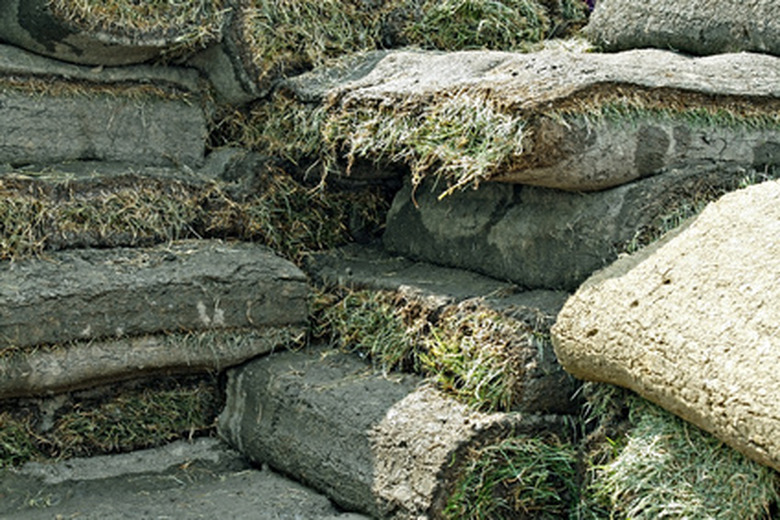How To Lay St. Augustine Sod In Texas
Things Needed
- Soil test
- Agricultural limestone
- Fertilizer
- Rototiller
- Irrigation
- Garden rake
- Sod knife
- Lawn roller
St. Augustine grass is a warm weather perennial that will turn brown during colder winter weather. The thick turf is propagated through plugs and sod. Laying St. Augustine sod will take soil bed preparation. Once established, the grass grows so thick that in most applications it can remain weed-free when properly cared and maintained. Laying St. Augustine sod is best done in early spring at the beginning of the growing season when adequate rainfall can benefit irrigation methods.
Step 1
Conduct a soil test prior to any soil preparation. Contact your local agricultural extension service for the process and procedures. Soil results will take approximately three weeks to six weeks before the analysis is returned to you.
- St. Augustine grass is a warm weather perennial that will turn brown during colder winter weather.
- Laying St. Augustine sod is best done in early spring at the beginning of the growing season when adequate rainfall can benefit irrigation methods.
Step 2
Incorporate the soil test recommendations for fertilizer and agricultural limestone for adjusting the pH level and fertility of the soil. St. Augustine grass can tolerate a wide range pH level from 5.0 up to 8.5. Soils that have a pH level above 7.5 may develop a chlorotic look to the turf. In other words, an alkaline soil may cause the green turf to take on a yellowish appearance.
Step 3
Work the materials into the soil with the rototiller to final depth of at least 4 inches.
Step 4
Settle the soil with a few repetitions of irrigation.
Step 5
Establish the final grade by raking the soil with the garden rake. Keep the soil moist prior to and while laying the sod.
- Incorporate the soil test recommendations for fertilizer and agricultural limestone for adjusting the pH level and fertility of the soil.
- Establish the final grade by raking the soil with the garden rake.
Step 6
Begin laying the sod in early morning during the coolest temperatures of the day, if possible. Lay the first row of St. Augustine sod along a straight line such as driveway or sidewalk.
Step 7
Rake the soil with each new row of sod that is laid down. The roots of the sod will take hold faster if the soil is freshly disturbed.
Step 8
Stagger the ends of the sod rolls so the individual rows do not line up with each other as in a "brickwork" fashion.
Step 9
Cut any irregular shapes from the sod roll using the sod knife. Lay excess pieces of sod into any small crevices that may form between adjoining rolls. Leave no bare spots of soil, as weeds can germinate and grow up through the exposed soil.
- Begin laying the sod in early morning during the coolest temperatures of the day, if possible.
- Lay the first row of St. Augustine sod along a straight line such as driveway or sidewalk.
Step 10
Roll the sod into the soil with a lawn roller. This will increase the contact of the sod roots to the native soil.
Step 11
Irrigate the sod immediately after planting. Wet the soil to a 4-inch depth. Check the soil under a few pieces of sod to ensure a correct depth of moisture.
Tip
Lay boards or plywood over freshly laid sod when moving a wheelbarrow in the sod laying process. The constant application of equipment over the newly laid sod may cause soil compaction.
